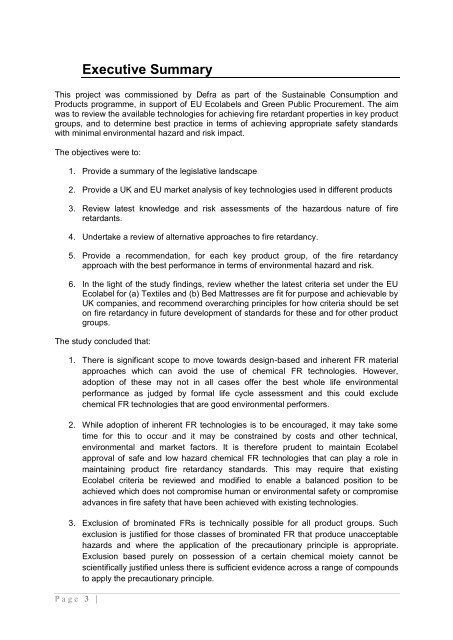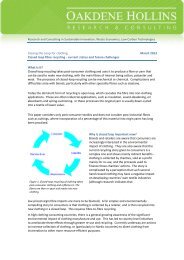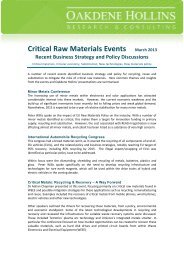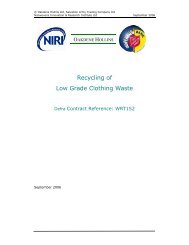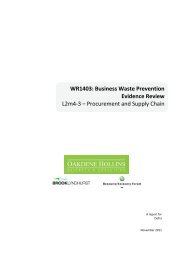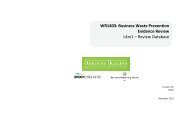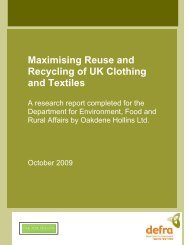Fire Retardant Technologies: safe products with ... - Oakdene Hollins
Fire Retardant Technologies: safe products with ... - Oakdene Hollins
Fire Retardant Technologies: safe products with ... - Oakdene Hollins
- No tags were found...
Create successful ePaper yourself
Turn your PDF publications into a flip-book with our unique Google optimized e-Paper software.
P a g e 3 |Executive SummaryThis project was commissioned by Defra as part of the Sustainable Consumption andProducts programme, in support of EU Ecolabels and Green Public Procurement. The aimwas to review the available technologies for achieving fire retardant properties in key productgroups, and to determine best practice in terms of achieving appropriate <strong>safe</strong>ty standards<strong>with</strong> minimal environmental hazard and risk impact.The objectives were to:1. Provide a summary of the legislative landscape2. Provide a UK and EU market analysis of key technologies used in different <strong>products</strong>3. Review latest knowledge and risk assessments of the hazardous nature of fireretardants.4. Undertake a review of alternative approaches to fire retardancy.5. Provide a recommendation, for each key product group, of the fire retardancyapproach <strong>with</strong> the best performance in terms of environmental hazard and risk.6. In the light of the study findings, review whether the latest criteria set under the EUEcolabel for (a) Textiles and (b) Bed Mattresses are fit for purpose and achievable byUK companies, and recommend overarching principles for how criteria should be seton fire retardancy in future development of standards for these and for other productgroups.The study concluded that:1. There is significant scope to move towards design-based and inherent FR materialapproaches which can avoid the use of chemical FR technologies. However,adoption of these may not in all cases offer the best whole life environmentalperformance as judged by formal life cycle assessment and this could excludechemical FR technologies that are good environmental performers.2. While adoption of inherent FR technologies is to be encouraged, it may take sometime for this to occur and it may be constrained by costs and other technical,environmental and market factors. It is therefore prudent to maintain Ecolabelapproval of <strong>safe</strong> and low hazard chemical FR technologies that can play a role inmaintaining product fire retardancy standards. This may require that existingEcolabel criteria be reviewed and modified to enable a balanced position to beachieved which does not compromise human or environmental <strong>safe</strong>ty or compromiseadvances in fire <strong>safe</strong>ty that have been achieved <strong>with</strong> existing technologies.3. Exclusion of brominated FRs is technically possible for all product groups. Suchexclusion is justified for those classes of brominated FR that produce unacceptablehazards and where the application of the precautionary principle is appropriate.Exclusion based purely on possession of a certain chemical moiety cannot bescientifically justified unless there is sufficient evidence across a range of compoundsto apply the precautionary principle.


